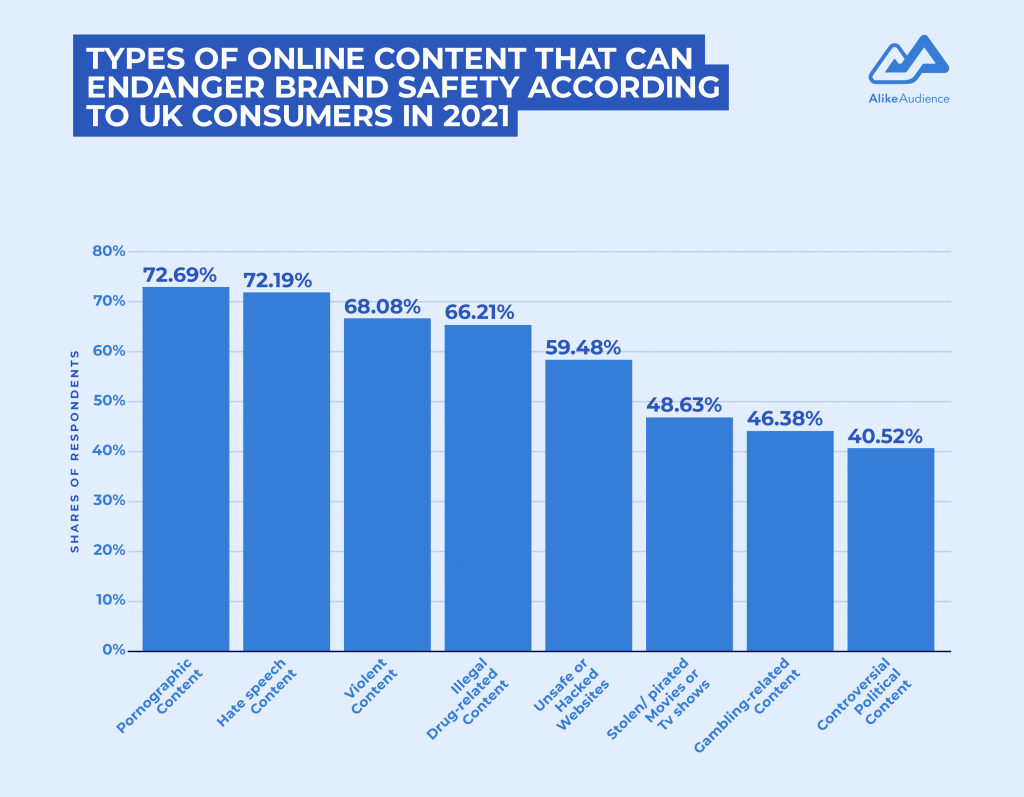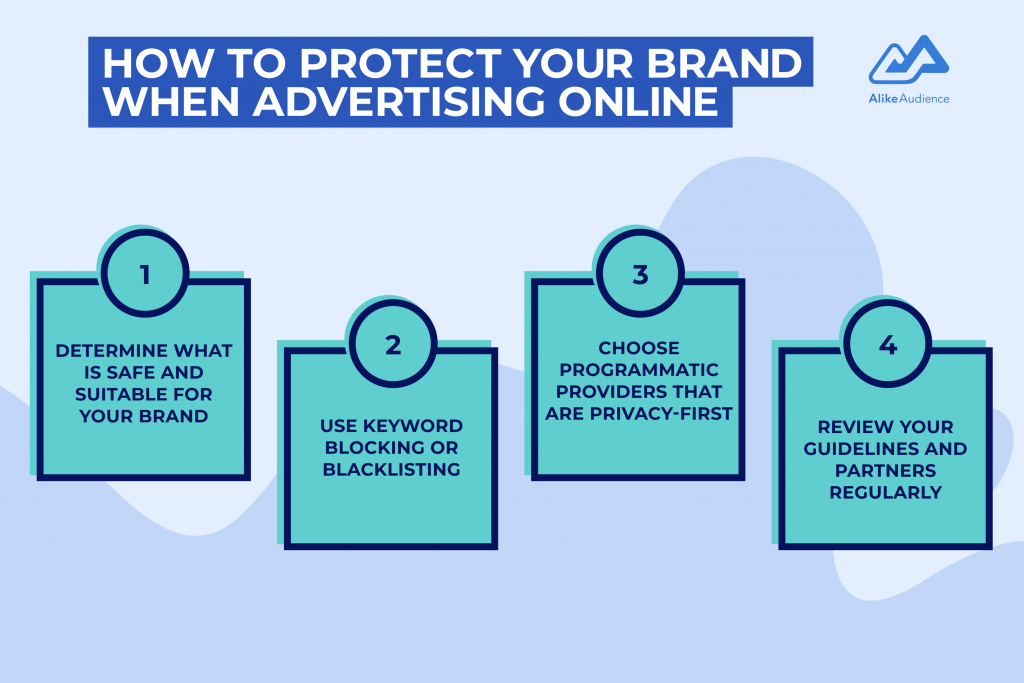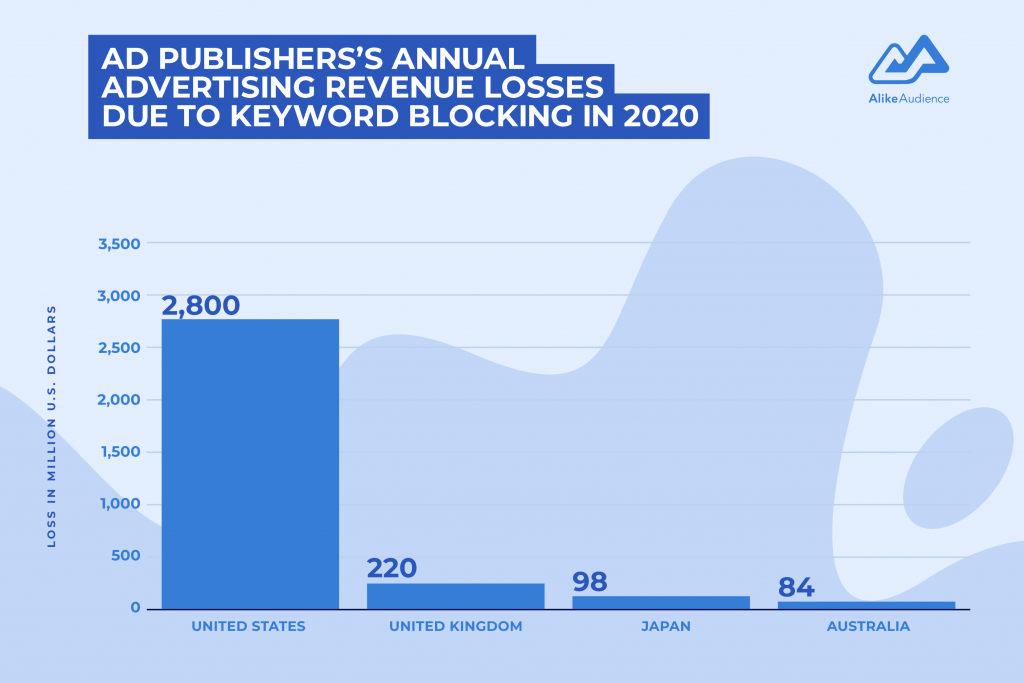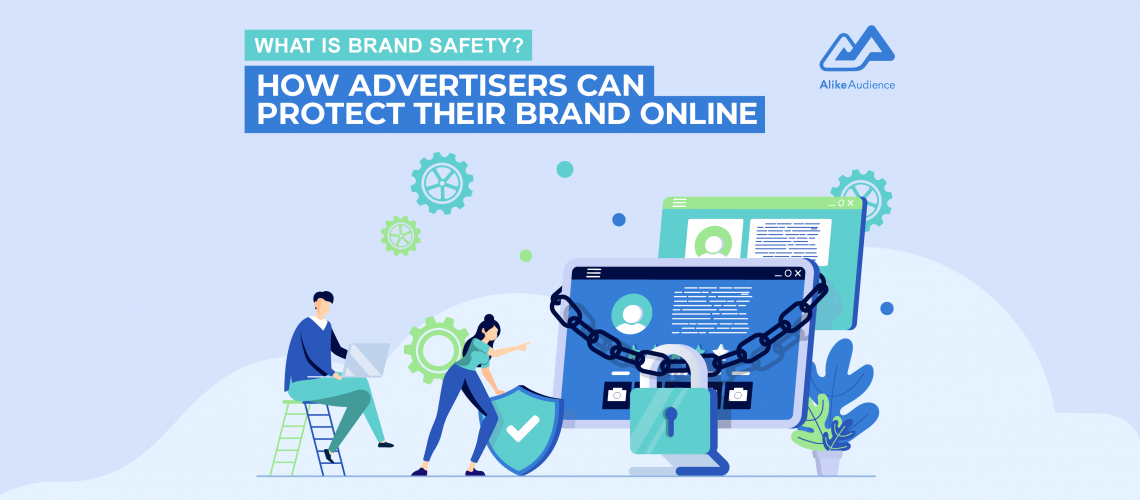For a brand advertiser, a misplaced or insensitive ad can be a PR disaster costing millions of dollars in losses. Think the 2017 L’Oréal’s campaign for The Prince’s Trust which was featured alongside a provocative message against homosexuality, or when YouTube played Samsung’s and Warner Bros’ ads over videos promoting climate change denial.
These PR disasters are not isolated incidents. According to a 2018 GumGum Research survey, 47% of brands involved in a brand safety incident suffered a social media blowback, 25% received negative press, and 13% lost revenue. When you asked customers, 70% said they wouldn’t like, recommend, or purchase from a company if their ads appear around harmful content.
As an advertiser or an agency, how can you protect your, or your clients’ brands? That’s where brand safety comes in.
As active members of the IAB Tech Lab, the leading consortium of marketers, agencies, and brands implementing industry standards, AlikeAudience put together this guide to discuss:
- • Types of online content that can endanger brand safety
- • How industry regulators, demand-side platforms, supply-side platforms, and data vendors combat unethical practices
- • Four strategies to protect your brand when advertising online, from keyword blocking to vetting vendors
What is brand safety? Types of online content that endanger brands
As programmatic advertising rises in popularity, brand safety remains a major topic of discussion across the ad tech industry. The Interactive Advertising Bureau (IAB) defines brand safety as measures taken to protect a brand’s reputation when advertising online.
According to the IAB, 77% of companies believe that brand safety is a key priority when advertising online. But over half of them report it’s now more challenging than ever to keep their brand safe. Why is this the case?
Since ads are bought and sold through completely automated processes in programmatic advertising, marketers rarely have transparency into which websites their ads will end up on.
The ads that you bought can be accidentally placed alongside inappropriate content. For example, Britain’s The Times found that ads from companies like L’Oréal and The Guardian had appeared next to videos advocating extremist political views online.
But what constitutes inappropriate content? According to consumers in the United Kingdom, these are the types of online content that can endanger brand safety:
- Adult
- Hate speech
- Violence
- Illegal drugs
- Unsafe or hacked websites
- Stolen/pirated movies or TV shows
- Gambling
- Controversial political views

Another subtle but equally important factor contributing to brand safety is audience data.
In May 2022, Twitter was fined $150 million for illegally selling personal information of users (phone numbers and email addresses) to advertisers, violating previous agreements with regulators. Just two years ago, the social platform had to pay £400,000 for breaking Europe’s General Data Protection Regulation (GDPR) data privacy rules.
Unethical data practices like this have littered the ad tech industry, and it’s time for marketers to partner with data vendors offering privacy-compliant audience segments.
In the next section, we explain what data vendors and programmatic providers in the open internet have done to protect your brand.
Brand safety measures in the open internet

Compared to walled gardens, different players in the open internet have strived to promote brand safety measures:
1. IAB Tech Lab
Last year, the IAB Tech Lab, an expert group of engineers, product managers, and data professionals, developed a content taxonomy. Established in conjunction with the Global Alliance for Responsible Media (GARM), the taxonomy helps third-party verification vendors avoid problematic online content without obstructing publishers’ ability to monetize.
Simply put, the content taxonomy provides a “common language” that publishers can use when describing content.
The standard identifies 11 sensitive content categories for online advertising, such as explicit sexual content, hate speech, terrorism, obscenity, and four risk-tolerance levels: high, medium, low and a ‘floor’ that sets the baseline for content advertisers should avoid.
The Tech Lab has also implemented VAST 4: a digital video ad serving template that standardizes the delivery portion of the video suite while communicating content details to assess brand safety.
2. Demand-side platforms
Many demand-side platform (DSP) providers have revamped their platforms to reassure marketers that their data and inventory are in good hands. A DSP is an automated marketplace where you can purchase digital ads on different mediums and channels in real-time.
A prominent DSP, The Trade Desk, ensures brand safety in the marketplace by informing their supply side they wouldn’t purchase any inventory without layer protection on top. Through these conversations, the company was able to make the economics such that the cost of paying for ad fraud was greater than the cost of finding it.
Data protection measures from DSP providers ensures digital marketers target users without heavily relying on their personal data, accessing enormous volumes of data to streamline the programmatic advertising process in a clean and trustworthy way.
3. Supply-side platforms
Perhaps the most direct factor influencing brand safety is supply-side platforms (SSPs). SSPs provide ad spaces to DSPs so marketers can purchase them. SSPs need to have stringent standards in place to weed out ad spaces that can be detrimental to brands.
A major supply-side platform, PubMatic, has partnered with the Trustworthy Accountability Group (TAG), a global initiative fighting to stop criminal activity and increase transparency across the digital advertising industry. PubMatic is also accredited with TAG’s “Certified Against Fraud” seal, which aims to combat fraudulent, non-human traffic throughout the digital marketing supply chain.
AlikeAudience is proud to collaborate with PubMatic as our first supply-side partner.
4. Data vendors
A 2022 IAB report found that 95% of brands have adjusted their data strategies because of political and browser pressures over privacy. With high-profile data scandals on the rise, marketers need to make sure that their audience data is coming from trusted, privacy-compliant sources.
One way you can do this is by working with consumer-consented mobile ad IDs (MAIDs) on a range of unique devices, such as tablets, smartphones, and data from consented hashed emails.
At AlikeAudience, we source our MAIDs and our consented hashed emails from reputable partners like Kochava, DigiCenter, and App Publishers. Each ID we collect comes with a number of attributes ranging from app ownership to mobile behaviors, demographics, and geo locations.
To create our audience segments, we further enrich each mobile advertiser ID by mapping it with one or two additional data sources. This ensures that our audience segments not only provide a holistic view of your target audiences, but also provide the highest accuracy.
Because we are built privacy-first, all the IDs and emails are sourced ethically and are privacy compliant, meeting General Data Protection Regulation (GDPR) and California Consumer Privacy Act (CCPA) requirements. Our team members are also active participants of the IAB Tech Lab.
Read on to find out four strategies to protect your brand online.
How to protect your brand safety when advertising online

1. Determine what is safe and suitable for your brand
Apart from brand safety, marketers also need to consider brand suitability when buying ads online. While brand safety is about protecting your digital ads from appearing alongside harmful content, brand suitability is about determining what sort of content fits your brand identity and products the most.
For instance, it’s suitable for the ads of a tobacco brand to appear next to tobacco-promoting content, while this would be inappropriate for a brand that sells sneakers to teenagers.
Before starting your programmatic ad campaigns, assess what kind of content is harmful or appropriate for your brand, and gain consensus among all stakeholders to draw up brand suitability guidelines.
2. Use keyword blocking or blacklisting
The next step is to have a list of keywords that don’t fit your brand’s narrative, and websites that you don’t want your ads to appear on. Then, set up your programmatic advertising platforms to block the keywords and blacklist the websites.
Specific URL or keyword exclusion lists allow you to avoid web content based on headline keywords that appear in the website URL or body content. Keyword blocklists are most effective to control for specific content that your brand must absolutely disassociate with. Continuously edit this list to avoid emerging controversial topics and content.
While this approach is definitely beneficial for marketers, ad publishers (those who sell ad spaces) have suffered from revenue losses worth $2800 million in the United States alone. Understandably, keyword blocking has become a controversial topic in the ad tech industry with many publishers advocating for alternative industry standards.

3. Choose programmatic providers that are privacy-first
The programmatic advertising ecosystem involves a range of providers, from demand-side platforms to data vendors. This is why it’s highly important that you choose those that strive to provide the highest level of privacy to marketers.
Dig deep into what your DSP, SSP, and data providers are doing to reduce detrimental ad placements, and whether they partner with industry regulatory bodies like the IAB.
Ask your current or future providers about their content classification guidelines and policies. Work with data vendors like AlikeAudience that source their audience segments from trusted, privacy-compliant partners.
4. Review your guidelines and partners regularly
In an ever-changing environment like ad tech, it’s crucial to constantly review your approved list of DSP, SSP, and data vendors regularly. Consider if the management, strategy, or policies of your vendors have changed and how the changes would affect your brand.
Constantly review your brand safety and suitability guidelines to keep up with recent events and news. Adjust your long and short-term marketing strategies to make room for any new topics and issues that you want to align your brand with (for example, LGBTQ+, climate change, etc.).
Wrapping up
In this article, we covered what brand safety is, what are the brand safety measures taken in the open internet, and how you can protect yourself when advertising online.
To protect the privacy of consumers, AlikeAudience executes the most rigorous privacy standards to ensure zero possibility of being identified from aggregate data. No Personally identifiable information (PIIs) are processed at any time through our data models and methodology, with data storage and processing facilities using industry-trusted services from AWS.
Contact our data strategist today for your audience data needs or sign up for our newsletter for more insights.


